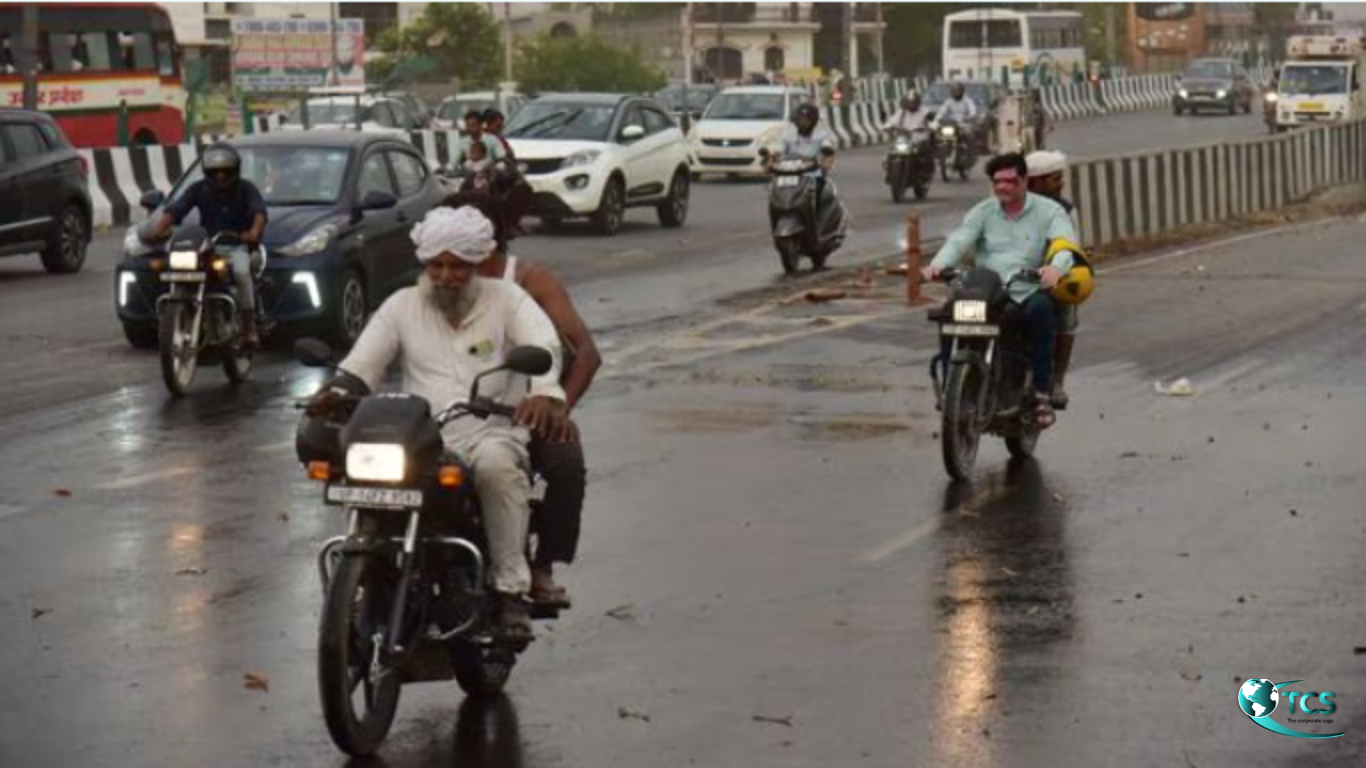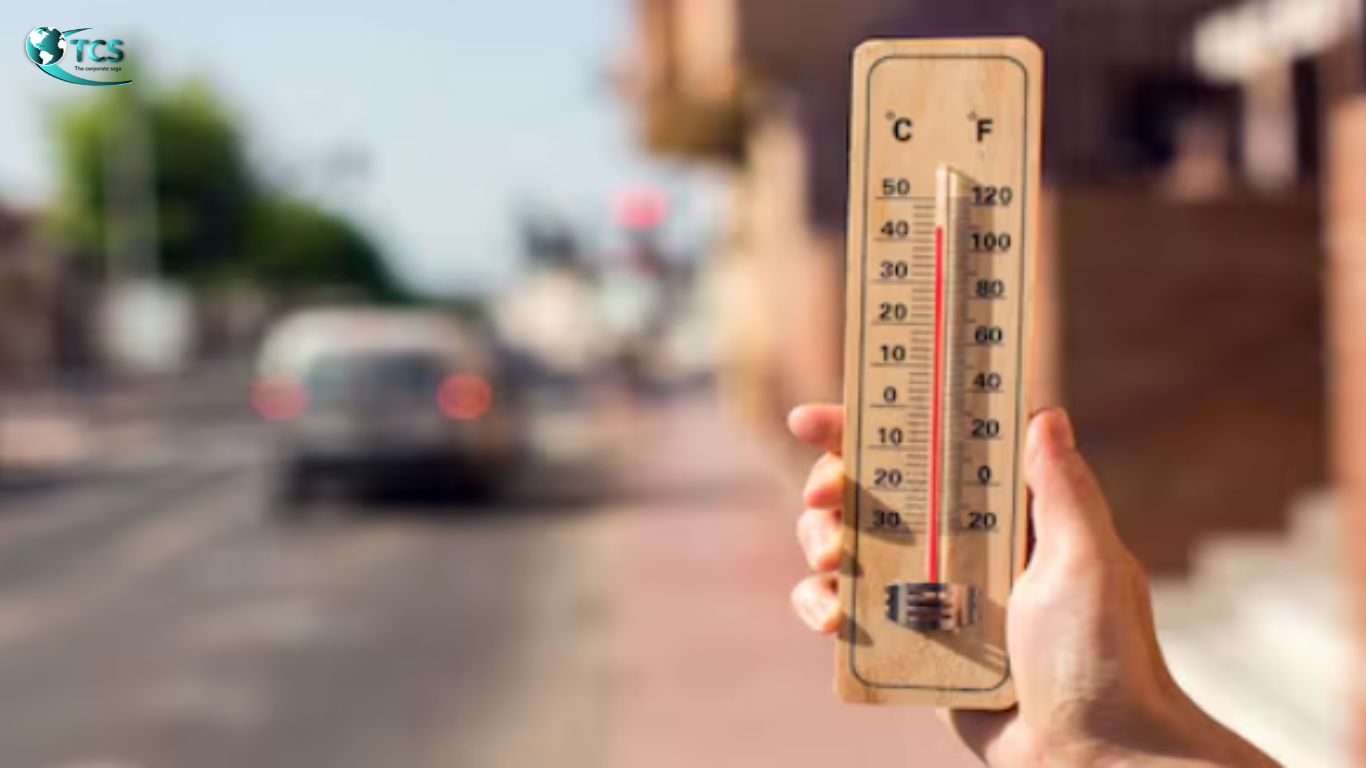Delhi Temperature Today: Light Rain, Dust Storm to Bring Some Relief as City Faces Heatwave. Check IMD Forecast Here
Delhi temperature today brings a sigh of relief to the city’s residents as light rain and dust storms are expected to mitigate the ongoing heatwave. According to the latest forecast from the India Meteorological Department (IMD), Delhi is set to experience a slight drop in temperature due to these weather changes.
Current Weather Situation in Delhi
Delhi has been grappling with an intense heatwave over the past few days, with temperatures soaring above 45 degrees Celsius in some parts of the city. The relentless heat has made daily life challenging, prompting concerns about health and safety among the residents. However, the IMD’s latest updates bring a glimmer of hope.
IMD Forecast: Light Rain and Dust Storm
The IMD has predicted light rain and dust storms in Delhi today, which are expected to provide much-needed respite from the sweltering heat. These weather conditions are likely to lower the temperature slightly, bringing temporary relief. The IMD has also issued warnings about potential disruptions due to the dust storm, advising residents to take necessary precautions.
Impact of Heatwave on Delhi
The ongoing heatwave has had a significant impact on Delhi. The high temperatures have not only affected daily routines but also posed serious health risks, particularly for vulnerable groups such as the elderly and children. Here are some of the major impacts:
Health Concerns
Heat-related illnesses such as heatstroke and dehydration have been on the rise. Hospitals have reported an increase in cases, and health officials have been urging people to stay hydrated and avoid prolonged exposure to the sun.
Power Consumption
With the mercury rising, power consumption in the city has reached unprecedented levels. The demand for electricity has surged due to the extensive use of air conditioners and coolers, leading to occasional power outages in some areas.
Water Supply Issues
The heatwave has also put a strain on the water supply in Delhi. Increased water consumption and evaporation rates have led to water shortages in certain parts of the city, exacerbating the challenges faced by the residents.
Precautionary Measures Suggested by IMD
To cope with the adverse effects of the heatwave and the impending dust storm, the IMD has issued several precautionary measures:
- Stay Indoors: Residents are advised to stay indoors during the hottest parts of the day and during the dust storm to avoid health risks.
- Hydration: It is crucial to stay hydrated by drinking plenty of water and other fluids.
- Protective Clothing: Wearing light, loose-fitting, and light-colored clothing can help keep the body cool.
- Use of Sunscreen: Applying sunscreen can protect the skin from harmful UV rays.
- Avoid Strenuous Activities: Engaging in strenuous activities, especially outdoors, should be minimized.
Anticipated Relief and Future Forecast
While the light rain and dust storm are expected to bring temporary relief, the IMD warns that the heatwave conditions might return soon after. The weather pattern suggests intermittent relief with sporadic showers, but the overall trend indicates high temperatures persisting in the near future.
Long-term Weather Trends
According to climatologists, Delhi’s weather pattern is expected to remain volatile with occasional heatwaves punctuated by short spells of rain and dust storms. This trend underscores the importance of being prepared for extreme weather conditions.
How to Stay Informed
Staying updated with the latest weather forecasts and advisories is crucial for residents of Delhi. Here are some ways to stay informed:
- IMD Website and App: The IMD regularly updates its website and app with the latest weather forecasts and advisories.
- Local News Channels: Keep an eye on local news channels for real-time updates.
- Weather Alert Apps: Several weather alert apps provide real-time notifications about significant weather changes.
- Social Media: Follow credible sources on social media for instant updates.
Community and Government Response
In response to the severe heatwave, various government and community initiatives have been launched to help residents cope with the extreme temperatures. These initiatives include:
Cooling Centers
The Delhi government has set up cooling centers in various parts of the city where people can take refuge from the heat. These centers are equipped with air conditioning and provide water and other basic amenities.
Public Awareness Campaigns
Public awareness campaigns have been launched to educate people about the dangers of heatwaves and the steps they can take to protect themselves. These campaigns include distribution of informational pamphlets and broadcasting of public service announcements.
Emergency Services
Emergency services are on high alert to respond to heat-related incidents. Ambulances and medical personnel are prepared to handle an increase in cases of heatstroke and dehydration.

Is It Really 52.9 Degrees In Delhi? Weather Chief Says Investigating Readings
Delhi temperature today has sparked widespread concern and disbelief as reports surfaced suggesting that the mercury has soared to an unprecedented 52.9 degrees Celsius. This figure, if accurate, would set a new record for the highest temperature ever recorded in the city. The India Meteorological Department (IMD) has responded to these reports by launching an investigation into the accuracy of the readings.
Unprecedented Temperature Reading Raises Eyebrows
The reported temperature of 52.9 degrees Celsius in Delhi has left many residents and meteorologists alike questioning its validity. Such an extreme temperature is almost 10 degrees higher than the average highs for this time of year, making it a startling anomaly.
IMD’s Response to the Extreme Temperature Report
The IMD, the authoritative body responsible for weather monitoring in India, has taken these reports seriously and has initiated a thorough investigation. The Weather Chief has stated that they are scrutinizing the data to determine whether there might have been any errors in the recording instruments or potential anomalies that could have led to such an extreme reading.
Verification Process
- Cross-Checking Instruments: The IMD is cross-checking the thermometers and other weather recording instruments to ensure they are functioning correctly.
- Comparative Analysis: Data from neighboring weather stations is being compared to see if similar readings were recorded in nearby locations.
- Technical Examination: Experts are examining the technical aspects of the recording process to rule out any malfunctions or errors.
Possible Causes for Discrepancy
Several factors could contribute to an inaccurate temperature reading:
Instrument Malfunction
One of the most common reasons for an erroneous temperature report is a malfunctioning instrument. Faulty thermometers or weather stations can give false readings, particularly if they have not been properly maintained or calibrated.
Localized Weather Phenomena
Localized weather phenomena, such as heat pockets, can sometimes cause isolated areas to experience higher temperatures than the surrounding regions. However, a spike to 52.9 degrees Celsius would be highly unusual and would typically be accompanied by other noticeable environmental changes.
Human Error
Human error in reading or recording the temperature can also lead to discrepancies. This can include misreading the thermometer, inputting the data incorrectly, or failing to account for environmental factors that might affect the reading.
Historical Context of Delhi’s Temperature Extremes
Delhi has experienced extreme temperatures in the past, but the reported 52.9 degrees Celsius would surpass all previous records. Historically, the highest temperature ever recorded in Delhi was around 48 degrees Celsius, which occurred during a heatwave.
Impact of Global Warming
Global warming has been contributing to higher temperatures worldwide, and Delhi is no exception. The city has been experiencing progressively hotter summers, with heatwaves becoming more frequent and intense. However, a jump to 52.9 degrees Celsius is still considered extraordinary and demands verification.
Public Reaction and Precautions
The news of such an extreme temperature has caused widespread alarm among Delhi’s residents. Social media has been abuzz with reactions ranging from disbelief to panic. Health officials have reiterated the importance of taking precautions to stay safe during extreme heat conditions.
Staying Safe in Extreme Heat
- Stay Hydrated: Drink plenty of water and avoid alcohol and caffeinated beverages.
- Avoid Direct Sunlight: Stay indoors during peak heat hours, typically from 11 AM to 4 PM.
- Wear Light Clothing: Opt for loose, light-colored clothing to stay cool.
- Use Sunscreen: Apply sunscreen to protect your skin from harmful UV rays.
- Check on Vulnerable Individuals: Ensure that elderly family members, children, and pets are well-protected from the heat.
Looking Ahead: Weather Predictions
While the IMD continues its investigation, it is essential for residents to remain informed about the ongoing weather conditions. The IMD will be providing regular updates on the situation and any new findings regarding the reported temperature.
Upcoming Weather Forecast
The weather forecast for the coming days suggests a continuation of high temperatures, albeit not as extreme as the reported 52.9 degrees Celsius. Residents should prepare for sustained heat and potential heatwave conditions, with recommended precautions remaining in place.

Delhi temperature today has reached new heights as the highest temperature in India was recorded in Mungeshpur, a locality in the national capital. The sweltering heatwave has not only affected Delhi but also several other parts of the country. As temperatures continue to soar, here is a comprehensive look at the top 10 hottest places in India today.
1. Mungeshpur, Delhi
Mungeshpur, located in the northern part of Delhi, has recorded the highest temperature in the country today, reaching a scorching 47.5 degrees Celsius. This extreme heat has significantly impacted the daily lives of residents, leading to increased cases of heat-related illnesses and power consumption.
Impact on Residents
Residents of Mungeshpur are struggling to cope with the intense heat. Health officials have reported a rise in heatstroke and dehydration cases. The local administration has advised people to stay indoors during peak heat hours and to keep themselves hydrated.
2. Churu, Rajasthan
Churu, known for its extreme weather conditions, has recorded a temperature of 46.8 degrees Celsius today. This desert town is frequently one of the hottest places in India during summer.
Heatwave Advisory
The local government has issued heatwave advisories, urging residents to avoid outdoor activities during the day and to take necessary precautions to prevent heat-related illnesses.
3. Phalodi, Rajasthan
Phalodi, another town in Rajasthan, has seen temperatures soar to 46.5 degrees Celsius. This town holds the record for the highest temperature ever recorded in India at 51 degrees Celsius, which was set in 2016.
Protective Measures
The authorities have set up cooling centers and distributed water bottles in public places to help residents cope with the extreme heat.
4. Banda, Uttar Pradesh
Banda in Uttar Pradesh has recorded a temperature of 46.2 degrees Celsius. The heatwave in this region is expected to persist for the next few days, with little to no respite in sight.
Health Precautions
Local health departments have been advising people to stay hydrated, use sunscreen, and avoid strenuous activities during the hottest parts of the day.
5. Nagpur, Maharashtra
Nagpur, often referred to as the “Orange City,” has recorded a temperature of 45.9 degrees Celsius. This central Indian city experiences extreme temperatures during the summer months.
Public Awareness Campaigns
The local government has launched public awareness campaigns to educate people about the dangers of heatwaves and the importance of taking preventive measures.
6. Ganganagar, Rajasthan
Ganganagar has recorded a temperature of 45.7 degrees Celsius. This city, located near the India-Pakistan border, frequently experiences high temperatures during the summer.
Emergency Services on Alert
Emergency services in Ganganagar are on high alert to respond to any heat-related emergencies and provide assistance to those in need.
7. Khajuraho, Madhya Pradesh
Khajuraho, famous for its ancient temples, has recorded a temperature of 45.5 degrees Celsius. The heatwave in this region is making it challenging for both locals and tourists.
Tourist Advisory
Tourists visiting Khajuraho are advised to take precautions, such as wearing hats, staying in shaded areas, and drinking plenty of water to avoid heat exhaustion.
8. Jhansi, Uttar Pradesh
Jhansi has recorded a temperature of 45.3 degrees Celsius. The extreme heat in this historic city is affecting the daily lives of its residents.
Cooling Centers Established
The local administration has established cooling centers where people can find refuge from the heat and access essential amenities like drinking water.
9. Bilaspur, Chhattisgarh
Bilaspur has recorded a temperature of 45.1 degrees Celsius. The heatwave in this region is expected to continue, with temperatures remaining high.
Precautionary Measures
Residents are being advised to stay indoors, avoid direct sunlight, and stay hydrated to prevent heat-related health issues.
10. Jaisalmer, Rajasthan
Jaisalmer, known for its desert landscape and historic fort, has recorded a temperature of 44.9 degrees Celsius. The extreme heat is a common occurrence in this region during the summer.
Heatwave Management
Local authorities have implemented heatwave management strategies, including public awareness campaigns and distribution of water in public places, to help residents and tourists cope with the heat.
Conclusion
As Delhi temperature today highlights the ongoing heatwave affecting India, it is crucial for residents across the country to take necessary precautions to protect themselves from the extreme heat. Staying informed about weather conditions, staying hydrated, and avoiding unnecessary outdoor activities can help mitigate the risks associated with high temperatures.
